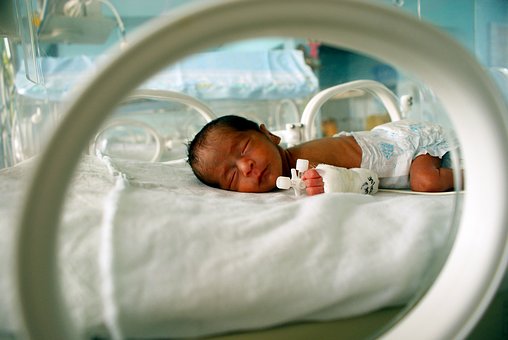
Hello and welcome to the second in the risk-adapted series of blog posts. I am a Senior Clinical Research Associate at Liverpool School of Tropical Medicine. During the consultation period for the Risk-adapted Approach, I was conducting a pharmacokinetic (PK) clinical trial of ciprofloxacin (antibiotic) administered to neonates at Liverpool Women’s and Alder Hey Children’s Hospitals for the University of Liverpool.
At the time of setting up this trial it was unclear whether there was a difference in regulatory requirements when evaluating a drug already being prescribed in clinical care, as compared to early phase trials for ‘first in man’ medicines.
The MHRA proposed a consultation for a more proportionate approach for (i) medicines with a marketing authorisation, or (ii) off-label medicines with sufficient evidence of established use in standard care. This Risk-adaptive Approach categorises trials depending on the risk of the investigational medicinal product (IMP) compared to standard care as:
Type A = no higher than the risk of standard medical care; Type B = somewhat higher than the risk of standard medical care; Type C = markedly higher than the risk of standard medical care linked to a more proportionate approach to the regulations.
As a paediatric clinical researcher, this pragmatic initiative was very relevant and welcome. I was keen to determine whether the Type A ‘low risk’ categorisation could be applied to medicines prescribed off-label, especially when administered to neonates and infants. Children are protected by additional regulations as they are classed as vulnerable groups. Off-label prescribing in paediatrics is common - as many as 50% of hospitalised neonates are administered off-label medicines.
This post describes the first part of my MHRA Type A category application for my pharmacokinetic clinical trial for neonates and infants supported by a model risk assessment. Ciprofloxacin is prescribed to neonates off-label as the marketing authorisation does not include this age group, therefore the application required evidence of use in standard care.
The third part of this series of blog posts focuses on using a risk assessment to plan the trial, and an illustration of how potential barriers were overcome by a more proportionate regulatory approach.
Indication for the trial
This clinical trial aims to provide population PK data for ciprofloxacin (antibiotic), when prescribed off-label in standard care to neonates and infants diagnosed with suspected sepsis. These data aim to contribute towards a Paediatric Investigational Plan (PIP) towards licensing ciprofloxacin for neonates and infants.
Trial outline and challenges for the set-up
The clinical trial was conducted in 2 lead centres for paediatric and neonatal intensive care. The target recruitment required 65 babies, stratified to represent each month of physiological development, including very premature babies from 24 weeks gestation to term infants 3 months of age. The timeframe to complete the trial within 18 months was challenging as this included preparing the protocol, regulatory and ethical approvals at 2 recruiting and 40 follow-on sites, and recruitment.
Application process: Type A status for an off-label medicine
The first step to apply for categorisation based on an assessment of the risk, Type A is defined as ‘no higher than the risk of standard medical care’. This includes IMP authorised in any EU Member State if they relate to the authorised range or indications, dosage and form. In addition, off-label use if this is ‘established practice and supported by sufficient published evidence and/or guidelines’.
To support evidence of use in standard care, a summary table was provided for the medical assessor at the MHRA which included clinical guidelines, publications and surveys. Fortunately, the work packages funded for this trial included a systematic review and survey to contribute towards the requirements of a PIP. This was an advantage. Each of the recruiting sites prescribed ciprofloxacin to neonates as part of standard care and the neonatal regimen was included in antimicrobial guidelines. The review included a case study at the lead recruiting centre which provided strong evidence that this antibiotic was used in standard care for a considerable period of over 25 years.
The European survey confirmed ciprofloxacin was prescribed in 26% of neonatal units, mainly as second line therapy. It is interesting that as it is prescribed off-label the dose regimen varied widely throughout Europe, illustrating the need to facilitate paediatric PK trials.

As this application was part of a consultation process, the MHRA medical assessor reviewed the table of evidence of use in standard care and confirmed this as a ‘Type A status’. The Risk-adaptive Approach is now established, therefore this assessment is undertaken by the sponsor to determine the category in order to decide whether to submit a clinical trial application or use the Notification Scheme.
Benefits of Type A status: when applying for a Clinical Trial Authorisation
Most trials categorised as Type A are for IMP with a marketing authorisation. Some of these trials will be eligible for the notification scheme. The notification scheme has 2 main advantages:
- if there is no objection by the MHRA, then the trial may commence within 14 days of submission
- as the trial is exempt from a clinical trial authorisation, this provides a considerable cost saving of up to £3,060 for applications requiring an IMP dossier.
Not all Type A trials are eligible for this scheme, for example placebo-controlled trials. A limitation at present is that trials for off-label medicine are not automatically eligible for the notification scheme, however, the MHRA advise that they still encourage investigators to discuss this option with the clinical trial help desk. These trials may still be categorised as Type A even though they are not eligible for the notification scheme.
An advantage of clinical trials classified as Type A is that the clinical trial application process to the MHRA may be quicker and simpler with considerably less cost to the funder and sponsor. The category makes it clear to the investigator that a Summary of Product Characteristics (SmPC) may be submitted instead of an IMP dossier and Investigator Brochure, which saves considerable time during preparation.
Equally, substantial amendments are not required when the change is consistent with the SmPC thereby avoiding delays during the trial whilst waiting for approvals of up to approximately 35 days and considerable financial savings as the cost is £225 per amendment.
Tips and recommendations
Medicines prescribed to children are often off-label therefore many trials will require evidence of use in standard care. A limitation for other investigators may be that completing a systematic review or survey may not be achievable in the timeframe as this can take several months. A recommendation would be to encourage sponsors and the MHRA to regard inclusion of off-label regimen for children in the British National Formulary for Children (BNFC) as a strong indicator that the medicine is currently prescribed in standard care. Alternatively, the researcher may include a specific section in the protocol referencing publications or clinical guidelines that support the use of the IMP in standard care for the population and indication.

A general recommendation would be to improve access to information on the application process for the Risk-adaptive Approach and the notification scheme . Guidance in the MHRA Good Clinical Practice Guide could be included in the Clinical Trial Tool Kit Route Map published by the National Institute for Health Research (NIHR). Also, there is an opportunity for sponsors and funders to prompt investigators at an early stage to consider whether their trial is eligible for Type A - for example by including a question in the sponsorship, funding or Integrated Research Application System (IRAS) forms - and guide them to complete a risk assessment before finalising the protocol.
Next steps
The next post will describe how preparing a risk assessment that considers the wider risks at each step of a trial prior to finalising the protocol allows investigators to plan methods to mitigate risks and prevent barriers to completing trials. A model risk assessment for this neonatal trial incorporating the Risk-adaptive Approach (see Example 1 Type A Risk Assessment) is published on the MHRA webpage to illustrate this approach.
Further FAQs on the Notification Scheme can be found here.
Don’t miss the next post, sign up to be notified by email when a new post comes out

